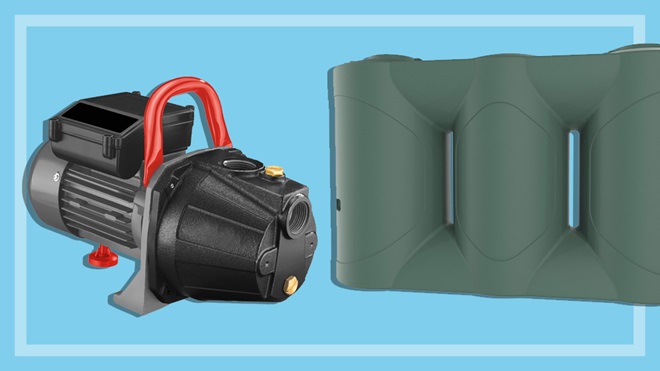If you've installed a rainwater tank or you're shopping around for one, well done – you're doing your bit to help the environment, and you're saving on your water bill too. But catching the water is only half the battle. Now you have to send the precious drops around the house and garden, and for that you need a water pump.
On this page:
- First steps in deciding on your rainwater tank pump
- Types of pump
- Installation
- Features to look for
- Costs
We're on your side
For more than 60 years, we've been making a difference for Australian consumers. In that time, we've never taken ads or sponsorship.
Instead we're funded by members who value expert reviews and independent product testing.
With no self-interest behind our advice, you don't just buy smarter, you get the answers that you need.
You know without hesitation what's safe for you and your family.
And you'll never be alone when something goes wrong or a business treats you unfairly.
Learn more about CHOICE membership today
First steps in deciding on your rainwater tank pump
The first step is to decide what you want your pump to do, as this will determine how powerful the pump will need to be as well as any extra features the pump will need to direct the water where you want it to go.
A good flow rate (in litres of water per minute) will not only help you water your garden quickly – it's also an important factor in getting your flow to work at a reasonable level throughout the home. A good domestic pump should deliver at least 20L a minute which is around the same rate as a typical domestic town water tap; but most can manage more than this. The more water outlets the pump needs to service, the greater its maximum flow rate needs to be.
Water pressure from the pump is also an important factor – even more so if you're using the pump to power your domestic water supply rather than simply watering the garden. (Nobody likes a dribbly shower!)
Most rainwater tank pumps are perfectly capable of providing good water pressure for a hose or garden watering system. If you want one to pump water to your household supply, for the laundry or toilet for example, you may need a heavier duty model. Consult an expert tank/pump supplier or plumber in that case.
Types of pump
External These sit outside the water tank, often mounted on the ground adjacent. This makes them more accessible for maintenance, but can also mean their noise is more noticeable. Pumps can be quite noisy when running, so it's worth putting a housing over the pump to muffle the noise and protect it from the weather.
Submersible These are installed inside the tank, and can therefore be quieter as the water in the tank muffles their noise. They take up a few litres of volume, and can be more difficult to access for maintenance, but generally pumps shouldn't need frequent maintenance so that's not likely to be a problem.
There isn't necessarily much difference in price or performance between these types, so go with whatever suits your installation best.
Installation
Pumps are often sold as is, without the necessary fittings to connect them to your rainwater tank. You may need to buy those separately. The pump supplier should be able to recommend the right fittings.
The pump will need a power connection, so a waterproof external power point will be needed nearby. If you don't have one, you'll need an electrician to install one. Don't use an extension cord to connect to a distant power point (indoors, for example) as it might not be weatherproof and therefore could be unsafe.
Connecting a pump is usually straightforward. Here is a basic guide to getting it done; but as always, read the instructions first for your pump to make sure you get it right.
Connecting an external pump
- Connect the pump inlet to the rainwater tank outlet using a short length of kink-resistant hose, secured at each end with hose clamps. The distance between tank and pump should be as short as possible.
- Prime the pump with water.
- Plug in the pump to the power point and switch it on.
- Connect a hose to the pump's outlet and you're ready to start watering.
Connecting a submersible pump
- Connect a hose to the pump's outlet.
- Lower the pump into the tank. You might want to attach a length of water-resistant rope for this purpose, to make the task easier and for later retrieval of the pump for maintenance. Don't use the power cord to lower or raise the pump.
- Plug in the pump to the power point and switch it on. You're ready to start watering.
Features to look for
- Automatic power on/off This is essential for pumps that supply indoor plumbing or an automatic watering system, but if you're just using the rainwater for manually watering the garden, then a simple manual power switch is probably OK.
- Multiple outlets on the pump let you connect more than one hose, or a hose plus plumbed-in connection.
- Run-dry protection prevents motor damage if the tank is empty.
- Carry handles can be handy if you need to move the pump between sites, but otherwise aren't necessary.
Costs
Rainwater tank pumps start at about $200-$300 and can go to $1000 or more, depending on their capacity and features.
Stock images: Getty, unless otherwise stated.



